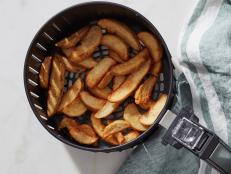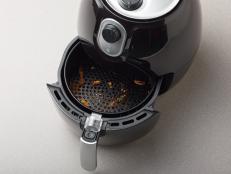Do You Burn More Calories When Exercising in the Cold Weather?
If you're a runner, maybe not. We break down why.

blyjak/Getty Images
With scores of gyms still closed or with limited capacity for indoor workouts, many of us will be taking to the outdoors to stay fit this winter. Will all that bulky outdoor clothing along with the extra energy needed to generate body heat boost our calorie burning?
In the summer, your body sweats to cool itself and works to maintain a constant temperature. In the winter, your body may not sweat quite as much, but it actually uses a similar amount of energy to warm your body and humidify the air you’re breathing. There are certainly some ways to help increase the number of calories burned when doing physical activity outside, however, you may not find them especially desirable!
The real issue with winter workouts is dehydration, says Heather Mangieri, RDN, sports dietitian and author of Fueling Young Athletes. “The cold can blunt your thirst mechanism making it less likely you hydrate before, during, and after a workout.” In addition, winter air is dry, so our bodies have to hydrate the air we breathe. And when we exhale at a faster rate during exercise, a significant amount of water is lost into the air.
How to Hydrate for Cold Weather Workouts
In the summer, we sweat. This visual cue reminds us to drink up. However, we may not realize how much we’re sweating in the winter as the additional clothing absorbs much of our sweat. Some people even avoid hydrating during outdoor activities so they don’t have to stop and take off all their winter boots, jackets and gloves to use the bathroom. To avoid dehydration, carry a thermal water bottle filled with lukewarm to cool water to prevent your water from freezing, and be sure to take four to six sips every 15 minutes or so, explains Mangieri. It’s also important to start all outdoor activity well-hydrated, and be sure to drink extra fluids after your activity.
How to Increase Calories Burned During Exercise
The main way to bump up calorie burning is the same in cold weather as it is in warm weather; that is to carry more weight. So strapping on skies and carrying ski poles can somewhat increase energy expended. Wearing slip-proof boots while pushing a baby stroller with a baby and lots of heavy blankets up hills can increase energy needs, and so can pulling kids up sledding hills. But taking a run in the cold, even if you’re wearing a few more clothes than you do in the summer is not going to increase calorie burning significantly.
What About Shivering?
Hard-core shivering also increases calorie needs. The isometric tightening and releasing of many groups of the muscles in the body can significantly boost the metabolic rate. But this is certainly not the way to pump up your workout. Once the body reaches shivering, it’s probably not able to smoothly execute your exercise. Plus the next step after shivering is an actual lowering of the body temperature which puts a person at risk of hypothermia, cautions Mangieri.
How to Recover from Cold Weather Workouts
Coming out of the cold doesn’t usually make us reach for a cool glass of water. More often, we reach for food, because the cold makes us feel extra-famished. But these foods might be much higher in calories than those we just burned. Instead nourish the body with a half peanut butter sandwich, a small chocolate milk, or warm foods that will help the body warm up chilled fingers and toes; grab a thermos of bean soup or a baked potato with a bit of olive oil and salt. All of these foods contain a good mix of the electrolytes potassium and sodium, along with some protein and carbs for recovery. In terms of hydration, Mangieri stresses the importance of re-hydrating after activity. “Beverages like water, milk, juice or a sports drink, as well as hydrating foods such as soups, yogurt, and fruit, can help restore hydration status.”
Serena Ball, MS, RD is a registered dietitian nutritionist, food writer, and mom of four children. She blogs at TeaspoonOfSpice.com and is the author of the best-selling The 30-Minute Mediterranean Diet Cookbook and the newly released Easy Everyday Mediterranean Diet Cookbook. Follow her @TspCurry on Twitter and Instagram.
Related Links:

































